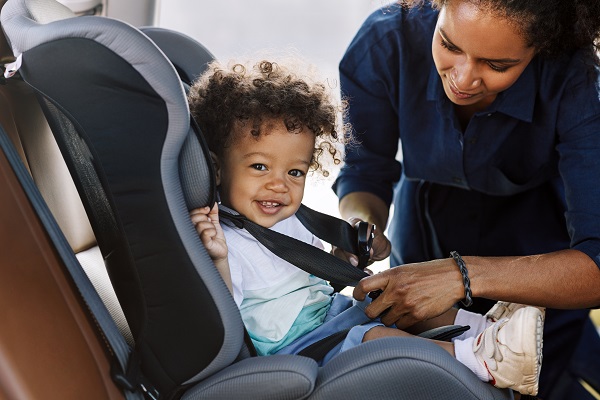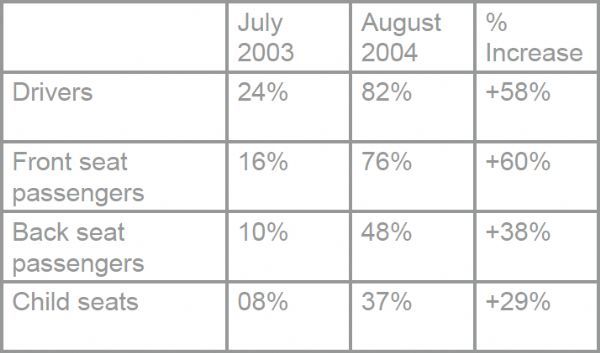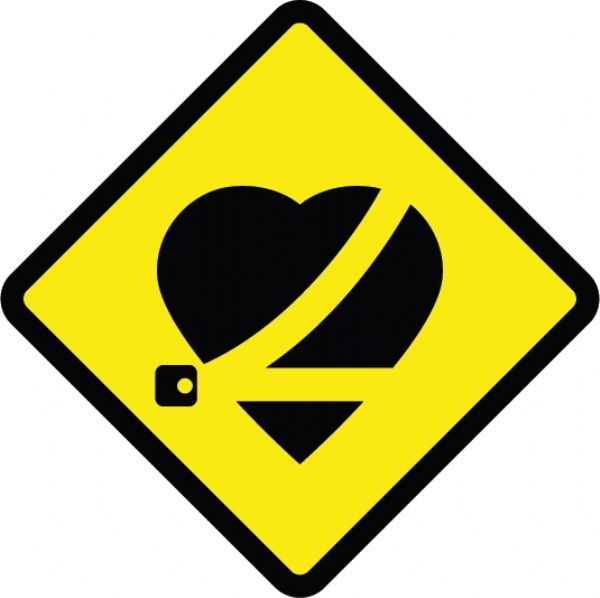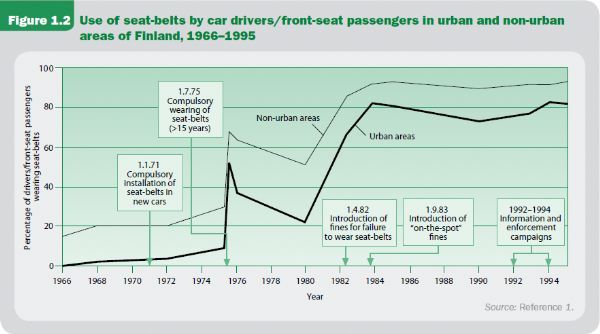





Seatbelts
One of the most effective ways to prevent injury or death in a vehicle crash is to make sure seatbelts are installed in vehicles, and that all people in the vehicle use a seatbelt appropriately. It is important that this applies to all front and rear seats. In some countries, seatbelt laws only apply to front seat passengers, which does nothing to promote safety of those in the rear seats.
Wearing a seatbelt can reduce the likelihood of adults dying in a crash by up to 50%. Children need special restraints as seatbelts fitted in vehicles are made for adults.
The key stages in establishing a programme to increase use of seat belts and child restraints are:
- legislation and penalties
- standards and regulations for equipment
- enforcement of legal requirements
- publicity campaigns and incentives.
Seat-belts and child restraints: a road safety manual for decision-makers and practitioners provides detailed information.
Before starting to educate people about the importance of wearing a seatbelt authorities need to make sure that all vehicles are fitted with seatbelts that are of good standard and are fitted properly. This will require the introduction of standards that state what is of acceptable standard. In countries with a high proportion of older vehicles without seat belts retro-fitment may need to be considered.
Then the public need to be educated about why seatbelt use is important through information on the risk to unbelted occupants and the benefits from wearing seat belts. The need for children to be properly restrained using suitable child seats and equipment should be emphasized.
Education programs can take many forms, although on their own are not effective at achieving behaviour change and so need to be combined with police enforcement and appropriate penalties, such as monetary fines. The education programs should make it clear that fines will be incurred if drivers and passengers are caught not wearing a seatbelt, and police enforcement should be visible. This is particularly important in the period after the introduction of new laws.
One such campaign was carried out in Sakhalin Island, Russia. Over a four year period an education campaign using television, radio, billboards, banners, mass media and the internet informed the public why they should use seatbelts, and warned them police would be fining people caught not wearing a seatbelt. Enforcement was also increased during this period. After each campaign they identified the groups who were still not using a seatbelt and targeted these groups in the next campaign. Compliance increased from less than 4% to almost 80% in urban areas, and from around 27% to over 76% in rural areas.
Treatment Summary
Case Studies
| Examples of related Case Studies |
|---|
| Building Momentum for Seat-Belt Laws in Turkey |
| Saving lives with car seats in the Philippines |
Related Images
 A child safety seat. Image credit: iStock
A child safety seat. Image credit: iStock A child safety seat. Image credit: iStock
A child safety seat. Image credit: iStock A child safety seat. Image credit: iStock
A child safety seat. Image credit: iStock A seat belt. Image credit: iStock
A seat belt. Image credit: iStock Belt-up campaign in Morocco. Image credit: ARRB
Belt-up campaign in Morocco. Image credit: ARRB Blackspot program sign board in Victoria, Australia. Image credit: ARRB
Blackspot program sign board in Victoria, Australia. Image credit: ARRB Children wearing seat belts. Image credit: iStock
Children wearing seat belts. Image credit: iStock Costa Rica's seat belt campaign dramatically improved seat belt wearing rates.
Costa Rica's seat belt campaign dramatically improved seat belt wearing rates. The central human and emotional message of Costa Ricas seat belt campaign was based around the concept of love and responsibility.
The central human and emotional message of Costa Ricas seat belt campaign was based around the concept of love and responsibility. UN Road Safety Collaboration, Seat Belts and Child Restraints Manual.
UN Road Safety Collaboration, Seat Belts and Child Restraints Manual.









